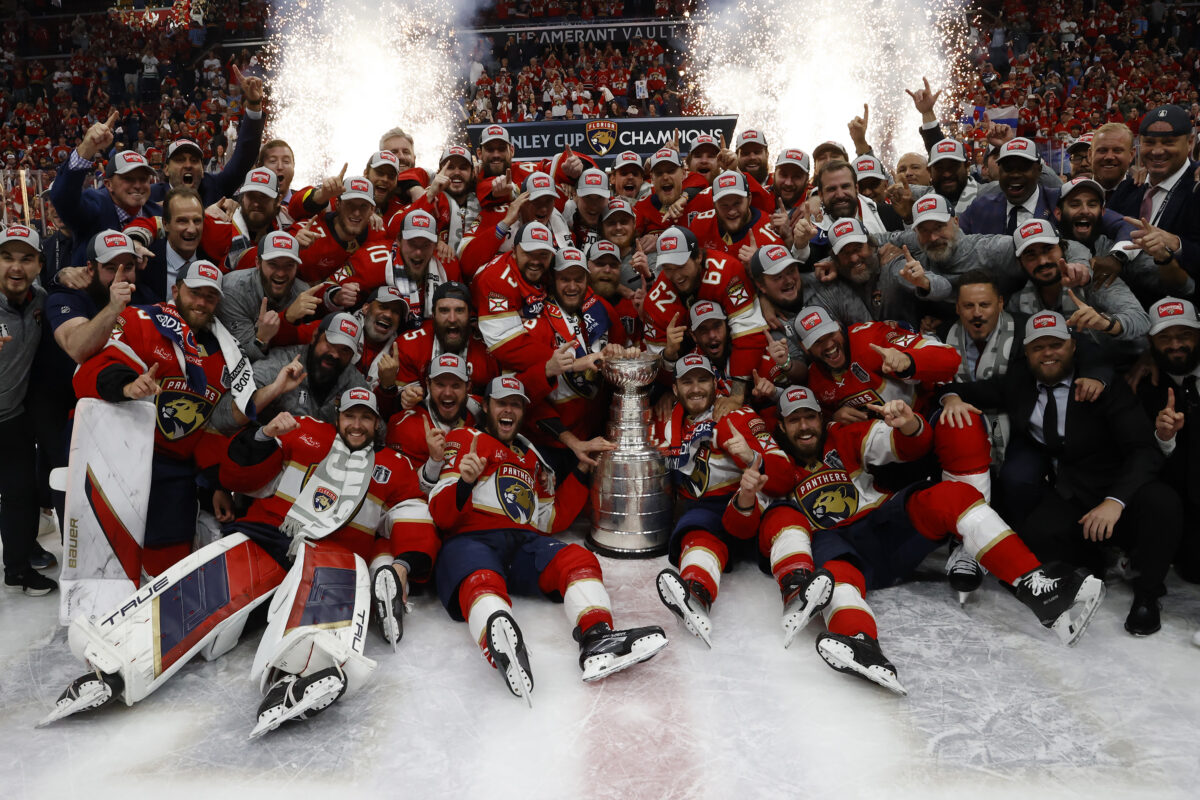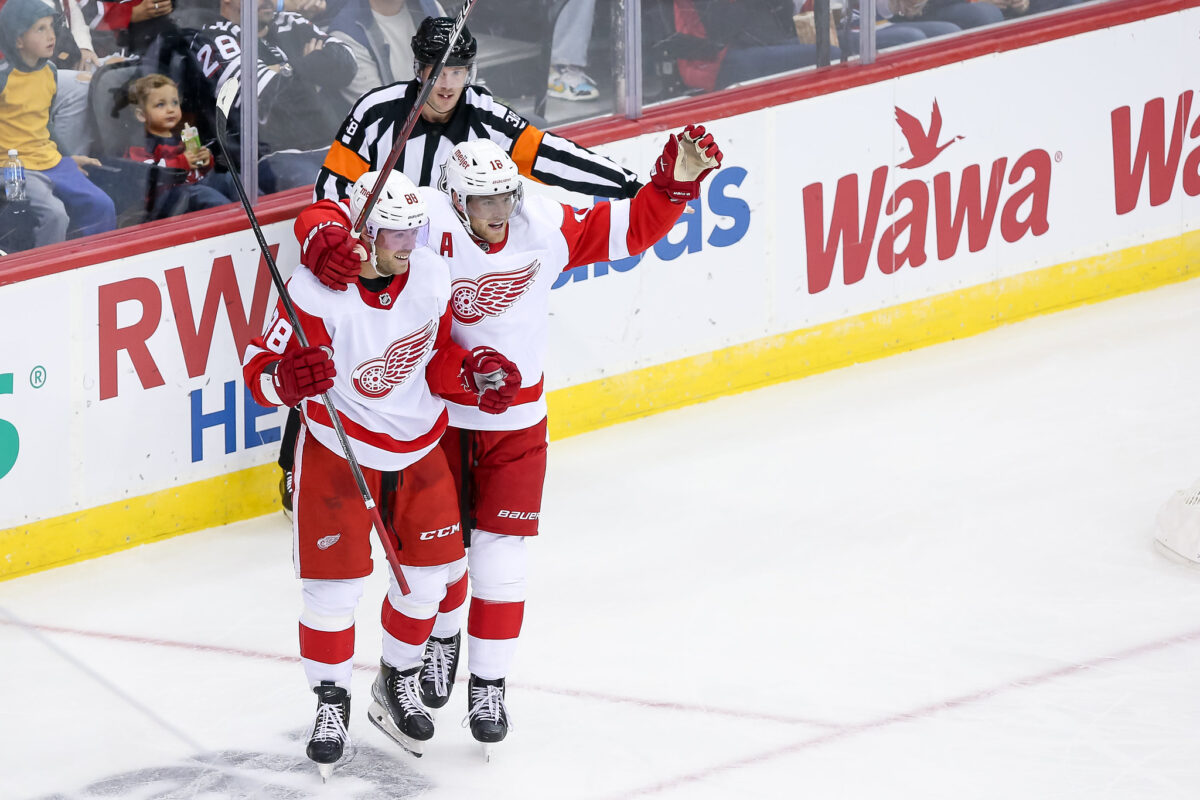The New York Islanders 2023-24 season was disappointing in nearly every aspect imaginable. The top six needed another offensive threat, the bottom six provided zero offense and average-at-best defense, the defensive core couldn’t stay healthy, and goaltending was a struggle. With the signing of Anthony Duclair, the Islanders have addressed the first issue, and an offseason filled with rest should fix the defensive and goaltending issues, but the team has yet to aggressively address the bottom six’s struggles. If general manager Lou Lamoriello wants this season to be any different than the last, he must overhaul the bottom six.
How the Islanders’ Bottom Six Struggled
Considering the Islanders had so much go wrong last season, it is easy to overlook the struggles within the bottom six. To clarify, it primarily consisted of Jean-Gabriel Pageau, Simon Holmstrom, Oliver Wahlstrom, Matt Martin, Cal Clutterbuck, Hudson Fasching, Kyle MacLean, and Julien Gauthier. Besides Wahlstrom, MacLean, and Gauthier, the rest were regulars in the lineup, playing nearly every game when healthy.
Within the Islanders’ bottom six, one player scored more than 30 points (Pageau), two scored more than 10 goals (Pageau, Holmstrom), and two finished with a positive plus/minus rating (MacLean, Holmstrom). Also, no line configuration consisting entirely of any of the players mentioned above finished with a 50 or greater expected goals percentage (xG%), according to MoneyPuck. The two most popular bottom six-line configurations of Martin-MacLean-Clutterbuck and Holmstrom-Pageau-Gauthier finished with 47 and 31.6 xG%, respectively. The best line combination with more than 40 minutes played was Martin-Ciizikas-Clutterbuck, who had 47.6 xG%.
Related: New York Islanders: Too Long, Too Much Money
While expected goals do not tell the entire story, a strong correlation between high xG% and success exists. The Edmonton Oilers and Florida Panthers finished the 2023-24 regular season first and second in the xG% category across the NHL with 57.4 and 56.93 xG%, respectively. The Panthers’ five most frequent line combinations also had a 57.7 xG% or greater. To compare, the Islanders’ first line of Anders Lee, Bo Horvat, and Mat Barzal had a 57.5 xG%.

The Islanders only had three line combinations with over 200 minutes together that finished above 50 xG%. One of these successful combinations involved replacing Lee with 34-goal scorer Brock Nelson. Although this change brought additional success to the first line, it caused the rest of the forward group to struggle.
An important takeaway from comparing the Islanders to the Panthers is the Panthers’ bottom six had chemistry together. All five of the 57.7 xG% or greater line combinations spent over 200 minutes together and accounted for eight different players. For reference, the Islanders did not have any bottom-six line configuration that spent 200 or more minutes together. In addition to the inconsistency of the Islanders’ bottom six-line combinations, not a single player individually finished a 50 xG% or greater. The highest in the category was MacLean with 48.7 xG% and the lowest was Clutterbuck with 35.1 xG%.
Moving Lee to the Third Line
The strategy would be to completely overhaul the bottom six, getting in as many news faces as possible. Of last season’s group, the only players the team should bring back are MacLean and Holmstrom. This is because they are both on the younger side, members of the penalty kill, and will be on affordable contracts this season. MacLean is making just $775,000 and Holmstrom is a restricted free agent, likely to make under $1 million.
From here, the bottom six will see the addition of either Anders Lee or Pierre Engvall due to the signing of Duclair. The most likely scenario would be to see Lee fall to the third line since Duclair is likely to replace him on the first line and Engvall has experience on the second line.
How to Overhaul the Islanders’ Bottom Six
With Martin and Clutterbuck free agents, the Islanders will not bring them back. Fasching and Gauthier would be traded or buried in the American Hockey League without impacting the salary cap if there are no trade suitors. Wahlstrom is a restricted free agent and would be traded, likely returning a mid-round draft pick or prospect.
Now the issue resides in shedding Cizikas’ $2.5 million and Pageau’s $5 million cap hits. Both players would have trade interest, so the Islanders would need to find a match. Both players should have positive trade value but even if they do not, they could be paired with a mid-round draft pick to get a trade to the finish line.
Now, the Islanders have MacLean, Holmstrom, Lee, and international free agent Maxim Tsyplakov in the bottom six with the need for three more roster forwards. From here, they will trade for 25-year-old center Morgan Frost of the Philadelphia Flyers. He had 13 goals and 41 points in 71 games last season. Most importantly, he had a 61.4 xG%.
Frost is young, fills a need as the third-line center, and has good analytics, a perfect match. He is making just $2.1 million in the 2024-25 season and will be a restricted free agent next offseason. It is hard to gauge what the Flyers’ asking price would be, but something along the lines of a second or third-round pick and a roster player, potentially Wahlstrom, would get a deal done.
From here, the Islanders have just over $6 million in cap space and need to sign two more forwards. The first forward to bring in is free agent, right wing Daniel Sprong. The 27-year-old, just like Duclair, has bounced around the NHL throughout his career and could be looking for a multi-year deal to settle down. He had 18 goals and 43 points last season, along with a 55.7 xG%, and would make a lot of sense on the third line. He would join Lee and Frost, creating an analytically driven, big-bodied line configuration to round out the previously underwhelming third line. Sprong could likely be signed to a two-year deal, worth $2.5 to $3 million annually. From here, the team will need to add just one more forward, ideally a center who can play on the penalty kill.

A perfect fit following this criteria is Pittsburgh Penguins center, Lars Eller. The 35-year-old had 15 goals and 31 points in 82 games last season, owning a 48.7 xG%. He also had a 52.3% win rate in the faceoff circle and 171 minutes on the penalty kill. He is making $2.45 million in the 2024-25 season. Since the Penguins are tight to the salary cap ceiling, Eller could presumably be brought in for very cheap if available. If the Islanders make the moves mentioned above, the forward lines would look like this:
Duclair – Horvat – Barzal
Engvall – Nelson – Palmieri
Lee – Frost – Sprong
Holmstrom – Eller – Tsyplakov
Extra: MacLean
The two main concerns in this lineup would be regarding faceoff success and the penalty kill, however, neither should be an issue. In addition to Eller’s 52.3% win rate last season, Fross had a 49.5% win rate and Horvat had 53.9%. If the Islanders needed to win a faceoff late in the game in the offensive or defensive zone, they would have the player to do it.
While losing Pageau and Ciizkas on the penalty kill would sting, the Islanders would be able to replace their void. Eller would join the top unit alongside either Tsyplakov or Holmstrom, leaving the second unit’s center position open. If MacLean is in the lineup, he would take that spot; otherwise, Horvat would fill in. Head coach Patrick Roy could also consider experimenting with Frost on the penalty kill.
It is not ideal, but the reality is the Islanders’ focus needs to be improving at even strength, not the penalty kill. If the defense regains health and Ilya Sorokin returns to form, recently appointed assistant coach Tommy Albelin only needs to establish a solid penalty-killing system for the team to find success in that area. If the team can dominate at even strength, the penalty kill can be addressed through a midseason trade if necessary.
If the Islanders followed this strategy, they would have:
- 11 forwards who had 10-plus goals last season (Nine on the 2023-24 roster)
- Nine forwards who had 15-plus goals last season (Six on the 2023-24 roster)
- Seven forwards who had 40-plus points last season (Five on the 2023-24 roster)
- Eight forwards who had >50 xG% last season (Six on the 2023-24 roster)
- 11 forwards who had >48.5 xG% last season (Seven on the 2023-24 roster)
To compare, the Stanley Cup-winning Panthers, including mid-season trade acquisitions, had:
- Eight forwards with 10-plus goals last season
- Five forwards with 15-plus goals last season
- Five forwards with 40-plus points last season
- 11 forwards with >50 xG% last season
- 12 forwards with >48.5 xG% last season
This analysis excludes Tsyplakov, as he has yet to play an NHL game. Holmstrom, who had a 36.9 xG% last season, and Lee, now 34 years old, are both expected to improve this season due to more realistic expectations. Holmstrom, in his first full NHL season, was frequently thrown around the middle-six and primary penalty-killing unit. Lee spent most of the 2023-24 season alongside Barzal and Horvat, struggling to keep up with their speed despite having stellar advanced analytics. Both Lee and Holmstrom will perform better in lower-pressure, system-oriented roles within the bottom six this season.
The Panthers’ success can be attributed to their lack of complacency, excellent structure, defense, and goaltending. The data indicates the Islanders could benefit from similar changes, and adopting the roster construction strategy of Panthers’ general manager Bill Zito is a smart move. The NHL is a copycat league, and who better to emulate than the reigning Stanley Cup champions?
As much as Islanders fans love to criticize their top six forwards, the blame needs to be on the bottom six. It felt as if each game, Barzal, Horvat, and Nelson were called on to carry the offense. Wins resulting from bottom-six contributions were rare and far between, but that would change if Lamoriello made these changes.
